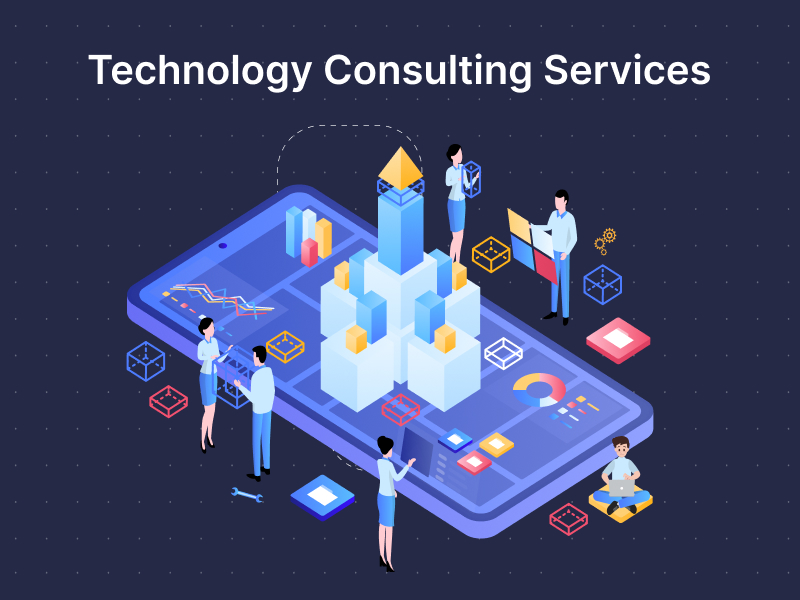Imagine a world where you can effortlessly access exceptional pediatric care without leaving the comfort of your own home. No more frantic dashes to the hospital with kids for sudden illnesses or enduring lengthy queues at the doctor’s office.
Thanks to the fantastic advancements in telemedicine, this dream is swiftly becoming a tangible reality for countless families worldwide. According to Fortune Business Insight, future predictions indicate telemedicine will expand, and the telehealth market is anticipated to reach over $397 billion by 2027.
This blog will explore the remarkable transformation in healthcare, specifically in pediatric care, due to telemedicine.
Introduction
As children are the future of our society, pediatric care is of the highest importance because it focuses on their health and well-being. For their growth and good quality of life, it is essential to guarantee their disease-free health and offer them prompt medical care.
However, obstacles such as distance restrictions, a shortage of pediatricians, and long wait times make it difficult to get specialized pediatric treatment. This is where telemedicine enters the picture, bridging the gap and revolutionizing healthcare.
What is Telemedicine?
We can see how technology is changing the healthcare scenario, telemedicine is an example of that transformation.
It refers to the delivery of healthcare services remotely using telecommunications technology. It uses audio, video, and other digital communication tools to connect healthcare providers with patients.
By leveraging telemedicine, healthcare professionals can provide clinical services, consultations, and support regardless of the physical distance between them and their patients.
Telemedicine has numerous advantages in pediatric care. It allows for timely and efficient diagnosis, treatment, and follow-up care, even in remote or underserved areas.
With the support of a healthcare app development company, pediatricians can communicate with patients and their parents or caregivers through secure video calls, exchange medical information, and monitor their health remotely.
Drive Real Time Business Success
Telemedicine Applications in Pediatric Care
Now the question arises, how is telemedicine transforming healthcare? It’s done through the digital medical services delivered to patients and enabling them access to facilities at the ease of home.
Telemedicine has many applications in pediatric care; some key applications include:
-
Telemedicine for Mental Health Support
Telemedicine has proved invaluable in providing mental health support to children. Through secure video consultations, pediatric mental health professionals can assess and treat anxiety, depression, and behavioral disorders.
By investing in healthcare app development services, businesses can create such accessible applications and fill the gap in the healthcare sector.
-
Remote Consultations & Diagnosis
In this digital era, where every business is shifting towards online communication, telemedicine enables pediatricians to conduct remote consultations and diagnoses. The applications enable parents or caregivers to connect with pediatricians virtually and describe the symptoms their child is experiencing, and receive guidance for further action.
-
Enhancing Accessibility to Specialized Care
Telemedicine breaks down barriers to specialized pediatric care by enabling remote consultations with experts in various fields. For example, suppose a child in a rural area requires a consultation with a pediatric cardiologist or a geneticist. In that case, telemedicine allows for a virtual appointment, eliminating the need for extensive travel and long waiting times.
-
Virtual Monitoring and Follow-Up Care
Pediatricians can remotely monitor children with chronic conditions or ongoing treatment plans with telemedicine. Through wearable devices and remote monitoring systems, healthcare professionals can collect vital health data, such as heart rate, blood pressure, and blood glucose levels, and track their patients’ progress. This is how telemedicine is transforming healthcare by empowering Pediatricians with virtual support.
Benefits of Telemedicine in Pediatric Care
As you know how technology is changing healthcare, the integration of telemedicine in pediatric care offers several benefits that contribute to improved healthcare outcomes:
-
Improved Access to Healthcare
Telemedicine overcomes geographical barriers, making healthcare services accessible to children and families residing in remote areas.
It ensures that children receive specialized care regardless of location, reducing health disparities and improving overall health outcomes.
-
Convenience and Cost-Effectiveness
Telemedicine eliminates the need for families to travel long distances, take time off work, and incur additional expenses associated with in-person visits.
Virtual consultations can be scheduled at convenient times, reducing the burden on parents and caregivers.
Additionally, telemedicine can lower healthcare costs by reducing unnecessary emergency room visits and hospital admissions.
-
Enhanced Patient Engagement and Satisfaction
Telemedicine promotes active engagement between healthcare providers, children, and their families. Parents can actively participate in their child’s care, ask questions, and receive personalized pediatrician guidance. This increased engagement leads to higher patient satisfaction and better adherence to treatment plans.
-
Early Detection and Intervention
Telemedicine facilitates early detection of potential health issues in children.
Through remote monitoring and virtual consultations, pediatricians can identify symptoms or abnormalities early and initiate timely interventions.
This proactive approach can prevent complications and improve long-term health outcomes.
Also Read: Healthcare App Ideas: 20+ Ideas For Healthcare Professionals
Challenges and Limitations of Telemedicine in Pediatric Care
It is quite evident how telemedicine is transforming healthcare through its numerous benefits, yet there are some challenges to overcome.
-
Technological Limitations
Telemedicine relies heavily on technology, including stable internet connections, video conferencing platforms, and secure data exchange. In areas with limited internet access or inadequate infrastructure, the effectiveness of telemedicine may be compromised. Hence, no matter how technology is changing healthcare, technical glitches and connectivity issues can also disrupt virtual consultations.
-
Legal and Regulatory Considerations
Implementing telemedicine in pediatric care requires adherence to legal and regulatory frameworks.
Licensing and credentialing requirements vary across jurisdictions, and healthcare providers must ensure compliance with local laws. Additionally, privacy and consent issues must be carefully addressed to protect patient information.
-
Privacy & Security Concerns
The transmission and storage of medical data in telemedicine raise privacy and security concerns.
Implementing robust encryption measures, secure data storage, and strict access controls to safeguard patient information is crucial.
Adequate training and awareness among healthcare professionals and patients are essential to maintain data privacy.
-
Importance of In-Person Care
While telemedicine provides convenience and access to care, there are situations where in-person visits are necessary.
Physical examinations, specific diagnostic procedures, and hands-on treatments may require face-to-face interactions between pediatricians and their patients.
Even though we know how telemedicine transforms healthcare, balancing it with in-person care is crucial for comprehensive pediatric healthcare.
Enhance Your Business with Telemedicine!
The Future of Pediatric Care with Telemedicine
The future of pediatric care holds immense potential for further advancements in telemedicine:
Advancements in Technology
Continued advancements in telecommunications technology will enhance the capabilities of telemedicine. High-speed internet, improved video quality, and seamless data transfer will facilitate remote consultations and monitoring.
Integration with wearable and home-based medical devices will enable real-time health data collection and analysis.
Integration with Artificial Intelligence
Artificial intelligence (AI) is poised to play a significant role in the future of pediatric care through its integration with telemedicine.
AI algorithms can analyze vast amounts of medical data, diagnose complex conditions, and suggest treatment plans.
Machine learning algorithms can also identify patterns and trends in pediatric health, allowing for more personalized and precise care. With the support of a mobile app development company, businesses can implement these so hospitals can provide a better experience to their patients.
Potential for Personalized & Precision Medicine
Telemedicine, AI, and genetic testing open doors to personalized, precision medicine for children.
A web app development company can assist healthcare professionals in customizing treatment plans & interventions to their needs by analyzing a child’s genetic makeup and medical history.
This targeted approach can lead to more effective outcomes and improved quality of life for pediatric patients.
Increasing Collaboration and Knowledge-Sharing
Telemedicine facilitates collaboration among healthcare professionals, regardless of their geographical locations. Pediatricians can discuss complex cases through virtual consultations and teleconferences, share knowledge and expertise, and seek second opinions. This collaborative environment fosters a culture of continuous learning and innovation, ultimately benefiting pediatric patients.
Also Read: The Future of Healthcare Software Development: Emerging Trends for 2023
Success Stories & Case Studies of Telemedicine
Real-life examples highlight how telemedicine transforms health care and positively impacts pediatric care. For instance, a study conducted in a rural area demonstrated that telemedicine consultations significantly reduced hospital admissions for pediatric patients with chronic conditions.
- Project ECHO (Extension for Community Healthcare Outcomes): Project ECHO is a telemedicine initiative that originated at the University of New Mexico. It uses video conferencing technology to connect specialists with primary care providers in underserved areas.
Through ECHO, primary care providers gain knowledge and expertise from specialists, enabling them to deliver high-quality care locally. This approach has successfully managed complex conditions like hepatitis C, HIV, and chronic pain in underserved communities.
- Apollo Telemedicine Networking Foundation: It is one of the great examples of how technology is changing healthcare, Apollo Hospitals, one of India’s leading healthcare providers, established the Apollo Telemedicine Networking Foundation (ATNF) to extend quality healthcare to underserved areas.
ATNF uses telemedicine technology to connect remote clinics and hospitals with specialists at Apollo Hospitals in urban centers. This initiative has enabled patients in rural areas to access specialist consultations, receive expert advice, and access necessary healthcare services without traveling long distances.
- Rural Health Clinics (RHCs) in Australia: Australia has a vast rural population, presenting challenges in accessing healthcare services. The Royal Flying Doctor Service (RFDS) initiated telemedicine programs in rural health clinics to address this issue.
These programs connect rural healthcare providers with specialists in urban areas via video consultations. This approach has enhanced healthcare delivery in remote regions, enabling patients to receive timely diagnoses, treatment, and follow-up care without extensive travel.
- Mental Health Services: Telemedicine has also expanded access to mental health services. It has enabled individuals to receive counseling and psychiatric consultations remotely, breaking down barriers related to distance, stigma, and limited availability of mental health professionals.
Telepsychiatry programs have shown positive outcomes in reducing symptoms, improving medication adherence, and increasing patient satisfaction.
These success stories and case studies illustrate how telemedicine has transformed healthcare delivery, improving access, reducing healthcare disparities, and enhancing patient outcomes across various specialties and regions. If you are also planning to hire a healthcare application development company, ensure they have the appropriate experience and expertise to meet your requirements.
Get free consultation and let us know your project idea to turn it into an amazing digital product.
Addressing Concerns and Ensuring Quality Care
To ensure the successful integration of telemedicine in pediatric care, several considerations should be taken into account:
-
Guidelines and Standards for Telemedicine in Pediatrics
Establishing comprehensive guidelines and standards specific to pediatric telemedicine is crucial.
These guidelines should address technological requirements, privacy and security protocols, and best practices for remote consultations and monitoring.
Regulatory bodies and professional associations play a vital role in developing and promoting these guidelines.
-
Training and Education for Healthcare Professionals
Healthcare professionals need appropriate training and education to utilize telemedicine in pediatric care effectively.
Training programs should cover technical aspects, communication skills, and ethical considerations for remote consultations.
Ongoing professional development and knowledge-sharing platforms can ensure that healthcare professionals stay updated with the latest advancements in telemedicine.
-
Maintaining Patient Trust and Confidence
Building and maintaining patient trust and confidence in telemedicine is paramount. Clear communication about telemedicine’s benefits, limitations, and privacy measures is essential.
Transparent consent processes and ensuring secure data transmission and storage can foster patient trust in the virtual care provided.
Conclusion
This was an overview of how telemedicine transforms healthcare and makes a more significant difference in the industry. The integration of telemedicine is reshaping the future of pediatric care.
By leveraging telecommunications technology, healthcare professionals can overcome geographical barriers, enhance access to specialized care, and improve patient outcomes.
Telemedicine offers convenience, cost-effectiveness, and increased patient engagement while addressing challenges through technological advancements and collaboration.
As we move forward, it is crucial to address concerns, establish guidelines, and ensure that telemedicine in pediatric care remains patient-centered and of the highest quality.
















